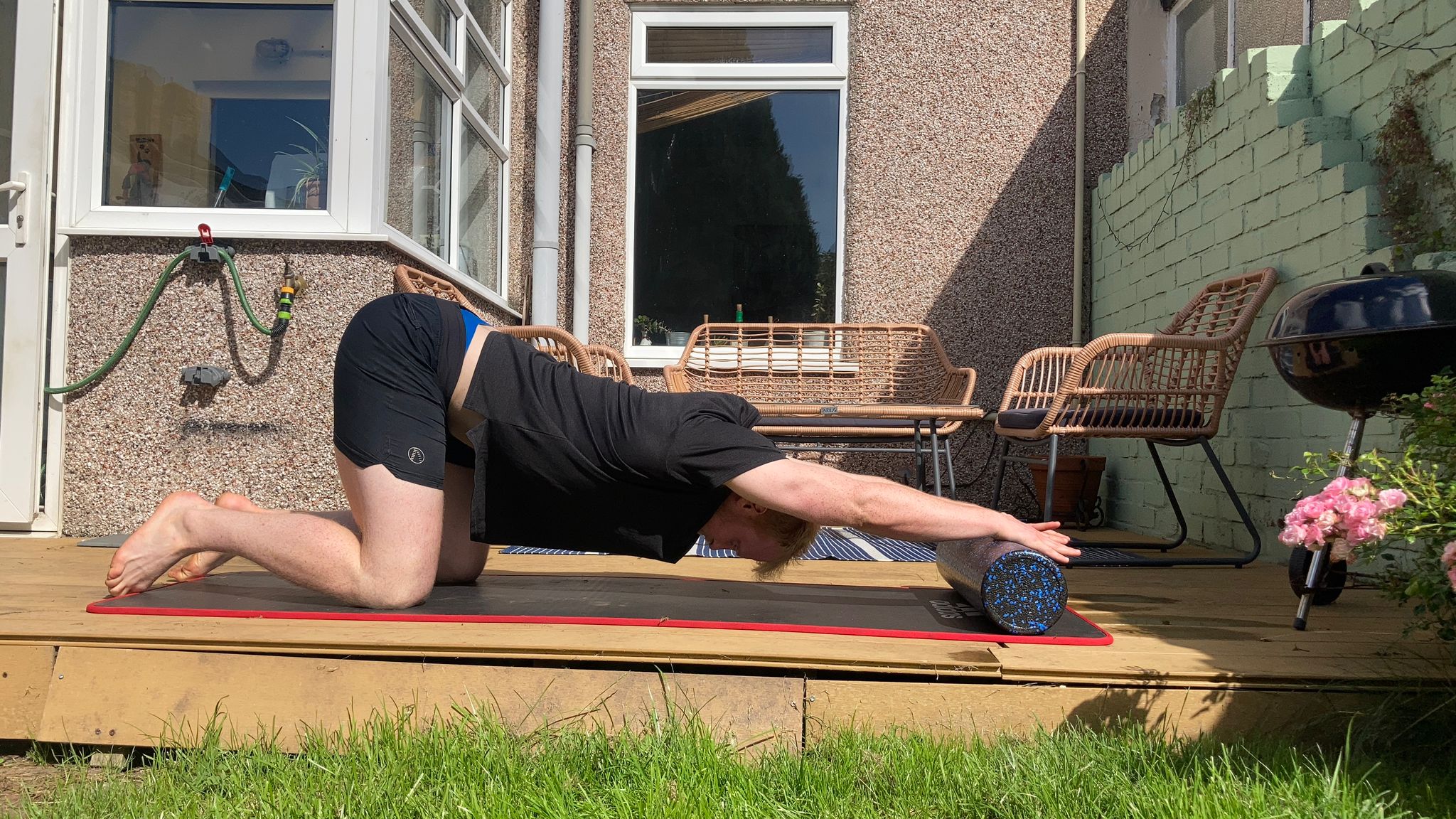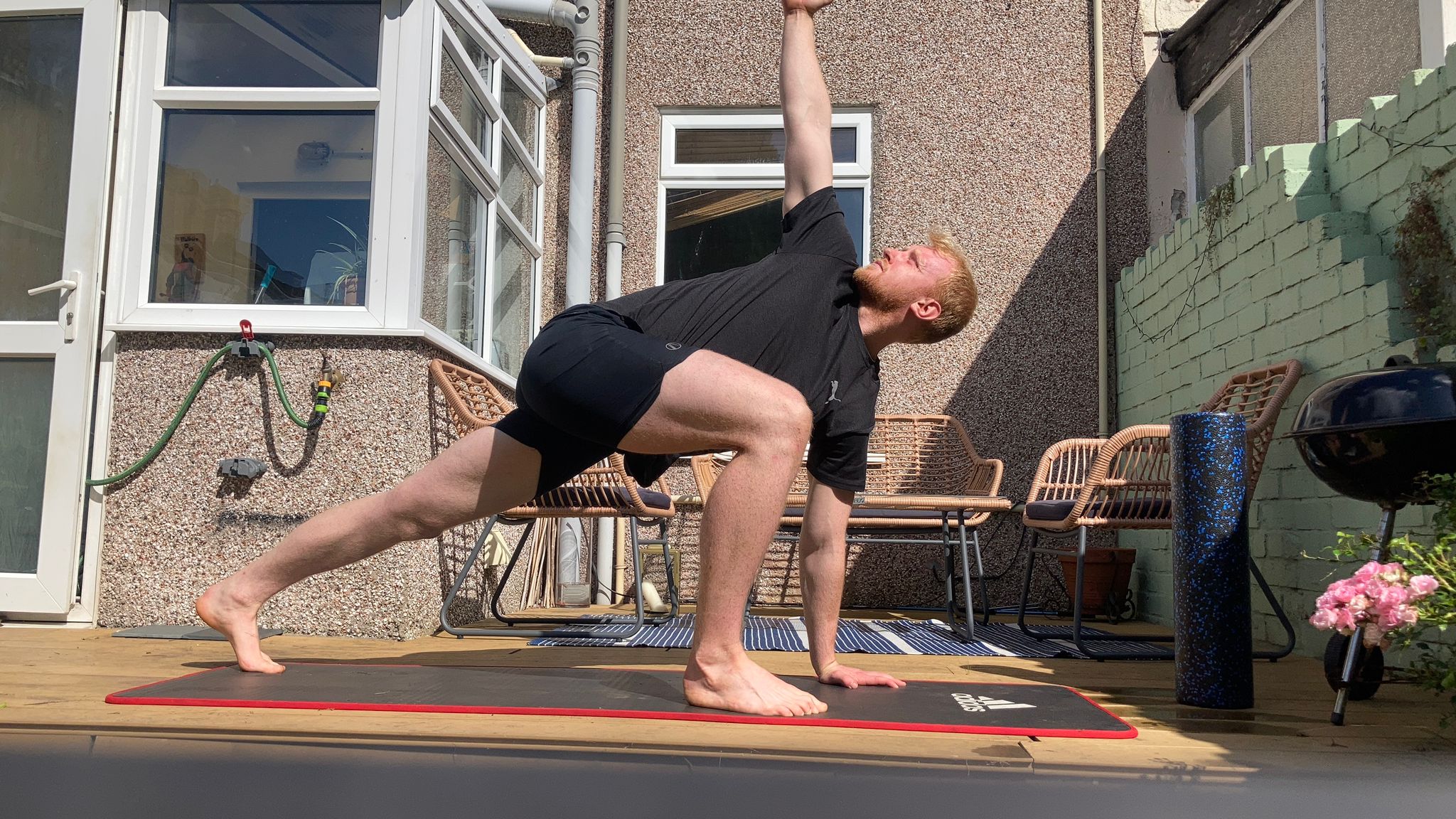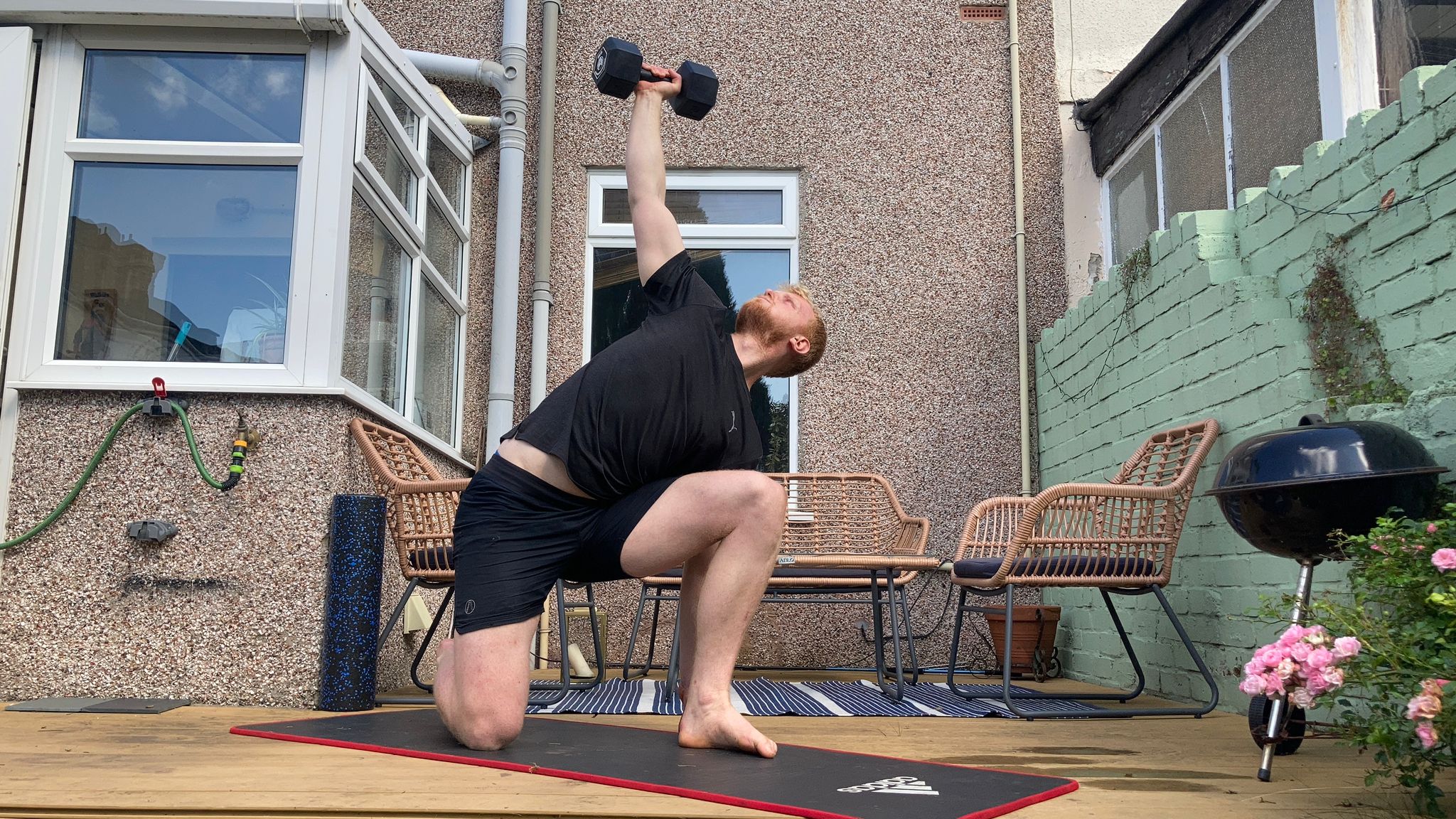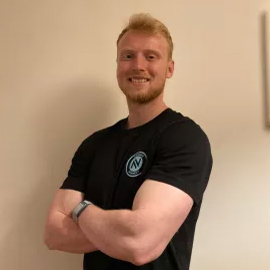I tried this 10-minute mobility routine, and it soothed my muscles and strengthened my joints
Do these five moves every day and you'll soon see an improvement in your mobility


I tried to sit cross-legged the other day; it didn't go very well. My knees ached, my hips felt tight and there came a point where it seemed my thighs were actively repelled by the floor.
For context: I exercise most days and try my best to stay in shape. On the above evidence though, it seems I've been so focused on metrics like strength and speed that I've let my mobility fall by the wayside.
But no more. I decided to unroll my best yoga mat and hunt down a good mobility workout on YouTube. I stumbled across this daily full-body routine from Squat University (aka physical therapist Aaron Horschig) that promised the "full body release" I desperately needed.
It takes less than 10 minutes, there are only five moves and it can be done pretty much anywhere, so I was easily able to squeeze it into my lunchbreak (with time for a few snacks afterwards).
You can follow along with the session via the video below, or keep scrolling to find out why I'll be returning to this routine on a regular basis.
How to do Squat University's 10-minute daily mobility routine
1. World's greatest stretch

This move targets your upper and lower body simultaneously, stretching your mid-back, hip flexors and adductors while engaging your glutes and opening up your shoulders.
This wasn't my first rodeo with the world's greatest stretch — I use it as part of my warm up during most trips to the gym — but Horschig's handy technique tips were still able to help me improve my form.
Start your week with achievable workout ideas, health tips and wellbeing advice in your inbox.
"While you're doing this, you're actively engaging your hips, you're driving your back leg to the sky [by not letting it drop towards the ground] and you're driving your knee to the side so you're squeezing your glutes," he explains
I tinkered with my positioning off the back of this advice and enjoyed a much deeper stretch as a result.
2. Prayer stretch

If, like me, you work at a desk most days, the prayer stretch is going to be very satisfying.
"The idea behind it is that we're working on the mid-back thoracic spine," Horschig says. "Because we're forward-shouldered looking at our phones all day long, we have problems opening up."
The prayer stretch helps to counter this and I definitely felt it through both my back and shoulders.
I also liked that there were variations provided for people with shoulder pain (take your arms wider as you lean forward) and those without a foam roller (place your hands on the floor in front of you instead).
3. Lat stretch

This was my favorite move of the lot. My usual CrossFit training involves a lot of pulling movements like pull-ups, so the beautifully deep stretch this exercise delivered was a blessing for my long-suffering lats (or latissimus dorsi; the large, flat muscles that spread across much of the back and play a large part in many pulling motions).
Horschig uses a racked barbell for this one, but says you can swap it for anything you can grasp onto (I used an exercise bike's handlebars, but a bannister also works).
4. Weighted goblet squat hold

What could be more simple than squatting? It's a fundamental human movement pattern and should feel like second nature. However, as we age our joints and muscles can become less mobile, and suddenly the squat feels anything but natural. Luckily, mobility training moves like the weighted goblet squat stretch can counter this.
"Find a weight that can offset your bodyweight and allow you to sink into an even deeper squat than you may be capable of without it," Horschig advises.
If you're new to this movement, it's worth learning how to squat properly before you attempt this move. I found that holding this deep squat position for the prescribed 60 seconds was a considerable challenge. I immediately felt tightness in my calf muscles, ankles and hips, so took Horschig's prompts to "freestyle" and move from side to side to feel for areas of stiffness.
After the hold, I rattled few a through unweighted squats out of intrigue, and they felt great! I found it much easier to keep good form through a larger range of motion.
5. Kettlebell windmills

Mobility training is often confused with other flexibility-focused exercises like stretching, but it's a different beast entirely, as Horschig explains in his video.
"Mobility is not just your ability to stretch and do simple flexibility exercises. We have to be able to control the motion we do. That's where mobility is different from static stretching; it has a control component."
The kneeling kettlebell windmill is an example of this, challenging you to control a weight through a range of motion.
If you don't have a kettlebell you can also use a light dumbbell like me, pick up a water bottle or perform the move without any extra weight at all.
I've done this as a standing exercise before, but with Dr Horschig's guidance I was able to tweak my technique and reap the benefits. Locking my shoulder blade down rather than shrugging it up helped me feel the stabilizing muscles at the back of my shoulder fire into action.
Doing this over time should improve my shoulder stability, which is crucial for common exercises in my training like handstand practice and overhead pressing.
Would I do this routine again?
By the end of this mobility session, my body felt great. Not only did my muscles have that lengthened, soothed feel that comes from stretching, but my joints also felt slightly stronger and more resilient.
Add that to the fact that this is pitched as a daily routine which takes less than 10 minutes, and you have an efficient mobility option. I'll definitely try to weave into my schedule more often.
If you're looking for more mobility-boosting options, another good practice to turn to is yoga. Try these 10 yoga stretches for beginners if you're just getting started, or go for a 10-move hip mobility yoga flow if you want to work on your lower-body

Harry Bullmore is a Fitness Writer for Fit&Well and its sister site Coach, covering accessible home workouts, strength training session, and yoga routines. He joined the team from Hearst, where he reviewed products for Men's Health, Women's Health, and Runner's World. He is passionate about the physical and mental benefits of exercise, and splits his time between weightlifting, CrossFit, and gymnastics, which he does to build strength, boost his wellbeing, and have fun.
Harry is a NCTJ-qualified journalist, and has written for Vice, Learning Disability Today, and The Argus, where he was a crime, politics, and sports reporter for several UK regional and national newspapers.